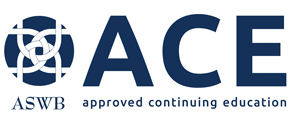Certificate in Trauma-Informed Programs and Practices for Schools (TIPPS)
Summary
Trauma-Informed Programs and Practices for Schools (TIPPS) is a comprehensive trauma-informed approach that focuses foremost on creating systems of support that are conducive to the health and healing of children who have experienced trauma, and to preventing compounding traumas that can occur in school settings.
The 10 TIPPS pillars represent distinct but related areas of this approach, each of which contains learning goals and strategies for school professionals. While certain pillars may appear more relevant to trauma work in schools, all pillars relate to the broader vision of creating systems of support that are conducive to the health and healing of children who have experienced trauma, and to preventing compounding traumas that can occur in school settings.
Ideally, members of each school community will join as a team to assess areas of strength and alignment with the TIPPS framework. From this assessment, schools can identify areas for improvement, and prioritize action steps to advance the work under each pillar.
All school professionals can play a role in helping to advance the TIPPS approach. In this course, we offer guiding principles and strategies that align with 10 TIPPS pillars, which are based in research on adversity and resilience. Each pillar includes case examples and resources for individualized learning and professional development. Our intent is to have this course motivate lasting changes in the practices of school professionals so that all children have the chance to succeed and thrive socially, emotionally, and academically.
The 10 TIPPS pillars represent distinct but related areas of this approach, each of which contains learning goals and strategies for school professionals. While certain pillars may appear more relevant to trauma work in schools, all pillars relate to the broader vision of creating systems of support that are conducive to the health and healing of children who have experienced trauma, and to preventing compounding traumas that can occur in school settings.
Ideally, members of each school community will join as a team to assess areas of strength and alignment with the TIPPS framework. From this assessment, schools can identify areas for improvement, and prioritize action steps to advance the work under each pillar.
All school professionals can play a role in helping to advance the TIPPS approach. In this course, we offer guiding principles and strategies that align with 10 TIPPS pillars, which are based in research on adversity and resilience. Each pillar includes case examples and resources for individualized learning and professional development. Our intent is to have this course motivate lasting changes in the practices of school professionals so that all children have the chance to succeed and thrive socially, emotionally, and academically.
- a. Define trauma. b. List the common causes of trauma. c. Explain the negative impacts of trauma. d. Select appropriate interventions for students exhibiting signs of trauma. e. Design a plan for educator self-care.
- a. Define physical safety. b. Define psychological safety. c. Define social exclusion. d. Define marginalization e. Adopt a trauma-informed approach to bullying. f. Create psychological safety in the school setting. g. Create safe and secure school environments.
- a. Summarize the signs and symptoms of trauma. b. Identify behavioral signs of trauma. c. Recognize academic helplessness as an indicator of trauma. d. Develop a plan for reacting to signs and symptoms of trauma. e. Develop strategies for assessing academic resilience. f. Create a trauma checklist for assessing your students.
- a. Define implicit and explicit bias. b. Explain how unconscious bias and implicit bias can affect behavior. c. Identify signs of implicit bias in the school environment. d. Classify the forms of racism, bias, sexism, marginalization and oppression in the school environment e. Assess oneself for unconscious and implicit bias using a valid instrument. f. Define cultural humility. g. Define racial equity-oriented Social Emotional Learning. h. Demonstrate racial equity-oriented teaching. i. Adapt current lesson plans to become racial equity-oriented. j. Create racial equity-oriented learning experiences.
- a. Define a strong community. b. Build a strong community. c. Model a strong community member. d. Identify barriers to building community. e. Explain how to build a strong community. f. Create opportunities for community building. g. Design service learning opportunities. h. Support student clubs and initiatives. i. Facilitate community-building activities. j. Design out-of-class community-building activities. k. Create morning meeting routines.
- a. Define a positive relationship. b. Explain the value of developing positive relationships. c. Compare qualities of positive and negative relationships. d. Develop positive working relationships. e. Analyze interactions with students, colleagues and parents. f. Survey parents and students on their relationship needs. g. Practice full transparency when interacting with students and parents. h. Create paired and group projects to encourage peer relationship-building.
- a. Define punitive discipline. b. Define restorative practices. c. Explain the effects of punitive discipline. d. Describe the 4Rs of logical consequences. e. Explain the benefits of de-escalation techniques. f. Apply the 4Rs of logical consequences when discipline is necessary. g. Analyze current approaches to discipline. h. Select the appropriate response to anti-social student behavior. i. Encourage restorative practices for parents and colleagues. j. Create non-punitive discipline SOP in classroom management.
- a. List expectations for classroom behaviors. b. List expectations for high academic achievement. c. Contrast not meeting, meeting, and exceeding expectations. d. Illustrate how to meet and exceed expectations. e. Develop a method of communicating expectations. f. Understand the value of explicit and consistent expectations. g. Demonstrate behaviors that lead to reaching expectations. h. Evaluate student classroom behavior according to expectations. i. Evaluate student academic performance according to expectations. j. Create a transparent list of expectations. k. Design explicit rubrics with detailed expectations. l. Define rubric elements for students in advance of assignment completion. m. Establish or improve student goal-setting procedures. n. Establish or improve student goal-tracking procedures.
- a. Define deficit thinking. b. Explain the harms of deficit thinking. c. Contrast deficit and strength-based thinking. d. Interpret statements as deficit or strength-based thinking. e. Select strength-based instructional approaches. f. Take part in professional development to reflect upon personal biases. g. Describe the implications of using the term "at-risk." h. Choose positive, affirming and supportive messages. i. Describe the strategic encouragement framework. j. Implement a strategic encouragement framework. k. Promote the strategic encouragement framework to colleagues and parents and caretakers.
- a. Define Social-Emotional Learning. b. Describe the CASEL framework. c. Understand the role of SEL in trauma-informed practice and environments. d. Explain responsible decision-making . e. Summarize the benefits of Social-Emotional learning. f. Design learning activities with SEL components. g. Adapt to the emotional needs of students, parents, and colleagues.
- a. List emergent needs that can impact student behavior and student learning. b. Explain how emergent needs influence student behavior and student learning. c. Build community partnerships with social services that address emergent needs. d. Identify social services which can address emergent needs. e. Assess, or screen students for their emergent needs. f. Recommend social and mental health services to students with known emergent needs. g. Support students in their efforts to secure assistance for their emergent needs. h. Create learning activities that are accessible to all students regardless of their emergent needs. i. Adapt assignments and deadlines for students with emergent needs. j. Prioritize emergent needs over academic needs.
Self-Paced Agenda
| Expected Duration | Description |
|---|---|
| self-paced | Pillar 0 | Trauma Basics: An Introductory Module to TIPPS |
| self-paced | Pillar 1 | Ensure All School Community Members Feel Safe, Respected, and Valued |
| self-paced | Pillar 2 | Increasing Awareness of the Signs and Symptoms of Trauma |
| self-paced | Pillar 3 | Increase Awareness of Biases and Stereotypes |
| self-paced | Pillar 4 | Building a Strong Learning Community |
| self-paced | Pillar 5 | Develop and Model Positive Relationships |
| self-paced | Pillar 6 | Reduce Punitive Discipline |
| self-paced | Pillar 7 | Communicate and Reinforce Goals and Expectations |
| self-paced | Pillar 8 | Avoid Deficit Thinking and Deficit Language |
| self-paced | Pillar 9 | Incorporate Social-Emotional Learning and Positive Coping Skills |
| self-paced | Pillar 10 | Create a Support System to Address Emergent Needs |
Instructor
webinar (asynchronous)
CE Contact Hours
- 12 regular asynchronous online
Location
online
 Todd I. Herrenkohl
Todd I. Herrenkohl